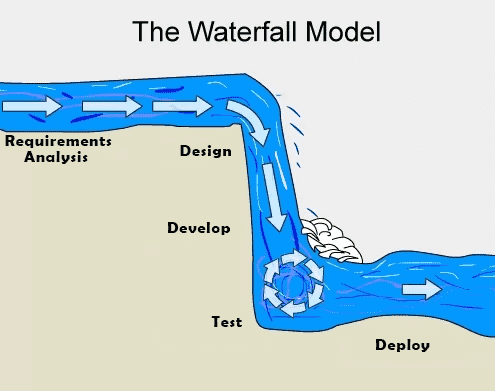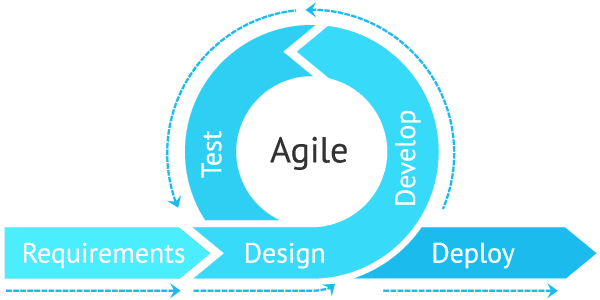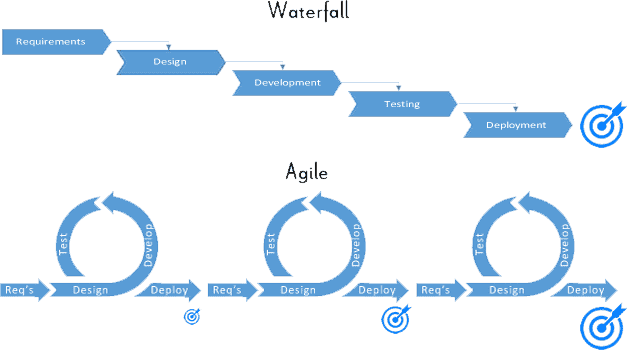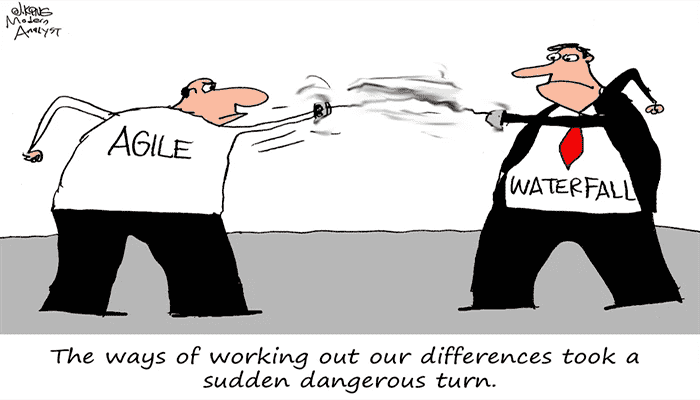Introduction
Companies, both large and small, adapt project management methodologies to ensure that business processes continue to run efficiently and without interruption during project implementation.
Unlike everyday work activities, a project is an event that has a defined start, end, scope, resources, and goal. Examples of projects include converting the network of a large enterprise, modernizing antiquated information systems, or constructing a new data center.
Project management is defined as the application of tools, techniques, skills, and knowledge to meet the requirements that are established for a project.
There are a variety of project management methodologies available to handle any project. It is the job of the project manager to ask which one works right for the project at hand.

Traditional Project Management
Traditional Project Management is a methodology for running projects in sequential fashion consisting of five steps that progress steadily downwards, much like the way a waterfall flows down: requirements analysis, design, development, testing, and deployment.

Often referred to as the Waterfall method, this project management approach focuses on linear processes, extensive documentation, detailed upfront planning, and prioritizing client requirements during the lifetime of the project as prominent factors to ensure a project’s success.
The success of a Waterfall project relies on the project manager performing comprehensive planning and requirements gathering to save time and effort for the team later in the life cycle of the project.
With the Waterfall approach, a well-defined project scope grants the team with a clear set of goals and timelines. Once the project team reaches the goal of one stage, they can quickly jump right into completing the goal for the next step.
Agile Methodology
The Agile methodology refers to any process that follows the guidelines and standards outlined in the Manifesto for Agile Software Development.
Any projects that have requirements with a degree of uncertainty or are bound to change as the project progresses benefit from the teamwork, collaboration, and flexibility found with an Agile management approach. Agile has become a practical solution for managing projects that contain intricate problems, evolving requirements, modularized work, and client involvement.
Agile still follows the five steps involved in the traditional methodologies: requirements analysis, design, development, testing, and deployment. However, an Agile project follows an iterative and incremental approach that immediately responds to the changing requirements of a client, instead of following a strict plan of action like traditional project management.

This persistent client communication and iteration delivery involved with the Agile methodology provides a project manager the ability to adjust sprints, iterations, or monitoring throughout the project lifecycle to adapt to a client’s changing requirements.
Waterfall Vs Agile
The Waterfall and Agile methodologies have few similarities, but both share a common goal of delivering an optimal product efficiently.
The Waterfall method is a strict and rigid process that is a best used for projects with a fixed and predictable scope. The sequential nature of the Waterfall methodology can become a drawback since it makes it impossible for a team to alter a completed stage if any discrepancies are encountered.

Traditional project management relies heavily on initial planning and requirements gathering to reduce the chance of catastrophic failure and help a project manager develop a work breakdown structure that will drive future project activities. This project plan provides the team an efficient way to map out the specific set of deliverables and reviews needed for each phase of the project.
Traditional project management also calls out developing robust documentation to reduce the dependency on individuals in the team and help ease the transition of members leaving or joining the project.
Compared to Waterfall, the Agile methodology follow a more flexible and evolving process that helps a project team adapt to changes in scope during a project’s lifecycle.

For instance, software development contains many risks that may require making immediate adjustments to a project on the fly to grasp opportunities. Unlike traditional project management, Agile gives prominence to collaboration with stakeholders and a working product over planning, design, and documentation.
The feedback from users and team members can profoundly influence scope after a project’s design and implementation but is highly encouraged to improve future iterations. Of course, the instantaneous feedback that Agile provides can also be a drawback since a sprint can become burdened by scope creep.
Since Agile is so flexible, new iterations that are added based on evolving customer feedback can lead to an entirely different project goal.
Additionally, the constant user involvement found in the Agile approach can be more time consuming than the traditional method. Pulling developers, QA analysts, and other technical staff from their work to attend a meeting costs their valuable time.

Conclusion
No standard project approach will work for all projects due to the pros and cons found in the Waterfall and Agile methodologies.
However, an optimal project management approach can be defined by understanding the project’s complexity and type, stakeholder involvement, and industry standard practice.
For example, consider an organization that is building a new data center for international business. A Waterfall project management approach is best suited for construction projects since they require a clear timeline and budget, each phase cannot finish until the previous is completed, and minor collaboration is needed.
In the end, the decision for a project approach just needs to ensure quality, on-time deliverables that are acceptable to the client.

So, what do you think? Please leave any feedback or questions you have in the comments below.
References
- Manifesto for Agile Software Development
- Effectiveness of Agile Implementation Methods in Business Intelligence Projects from an End-user Perspective
- What is Project Management?
- Managing the development of large software systems: concepts and techniques
Additional Reading

